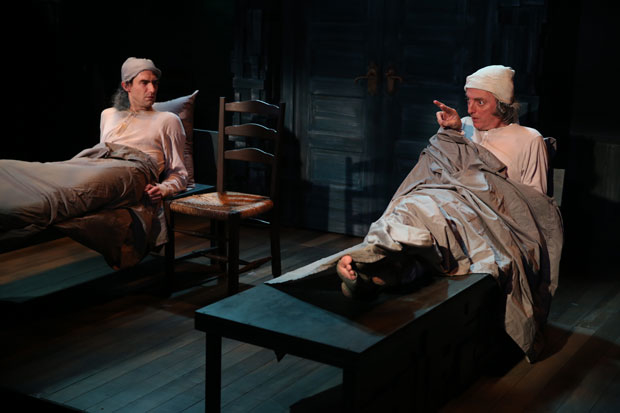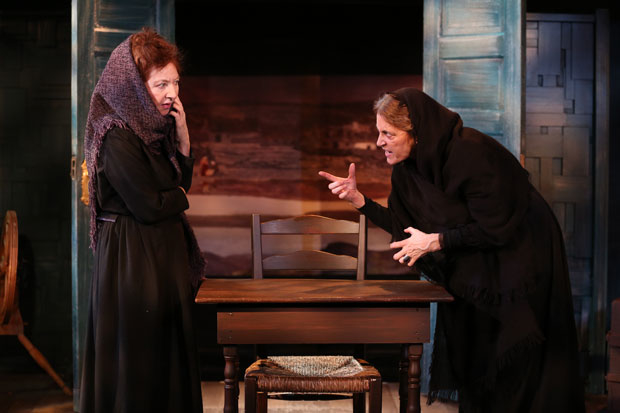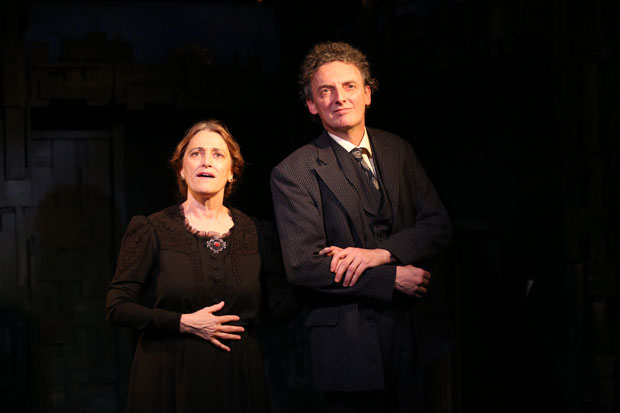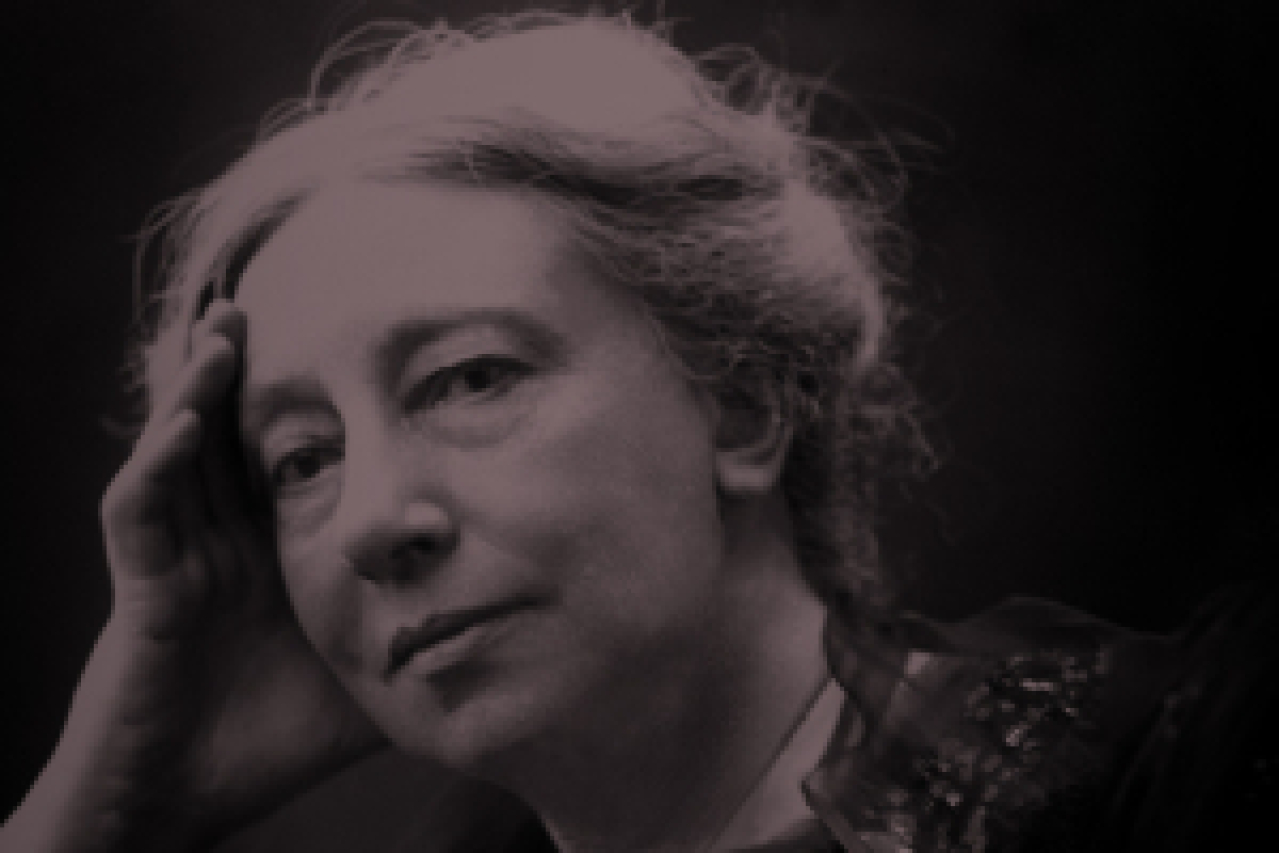Introducing Lady Augusta Gregory to a New Generation in Lady G

(© Carol Rosegg)
Lady G: Plays and Whisperings of Lady Gregory, premiering at Irish Repertory Theatre's W. Scott McLucas Studio Theatre, is both biographical play and dramatic revue. Conceived by co-writer and director Ciarán O'Reilly, the piece is based on the writings of Lady Augusta Gregory, a seminal figure in Irish literature and theater in the early 20th century and a colorful figure in her own right. Whether she's colorful enough to sustain what amounts to a Wikipedia entry brought to life is more questionable.
Though her writings have mostly been forgotten, Lady Gregory (played here by Úna Clancy) is best known for co-founding the Abbey Theatre in Dublin and nurturing the talents of writers like William Butler Yeats, John Millington Synge, and Sean O'Casey, among others, during the Irish Literary Revival. (Those and other historical figures are played by fellow cast members Terry Donnelly, John Keating, and James Russell.) In Lady G, Lady Gregory — or rather, the ghost of Lady Gregory, in a rather half-baked framing device — recounts not only her adventures in the literary and theatrical worlds both in Ireland and in the US. It also follows her privileged upbringing in Galway, her developing interest in Irish folklore and eventual embrace of nationalism, her marriage to Sir William Henry Gregory and extramarital love affairs, her devastation at losing her only son during World War I, and so on.

(© Carol Rosegg)
As embodied by Clancy, Lady Gregory comes across as a warm and wry figure with a sharp wit and reserves of passion and curiosity. It makes sense why so many Irish literary figures would gravitate toward her in the early 20th century. All her geniality, though, isn't quite enough to prevent a certain monotony from setting in, as large portions of Lady G are content to stick to a one-thing-after-another shapelessness that may be true to real life, but is less satisfying as a theatrical experience.
Charlie Corcoran's modest, homey set design, with its dominance of earthy dark green tones, doesn't help liven things up visually, though sound designer M. Florian Staab and lighting designer Michael O'Connor do some effective scene-setting work. O'Reilly also stages a fun moment toward the end of Act 1 in which Clancy and the rest of the cast serve audience members pieces of the cake — featuring "(my big secret) a little drop brandy" in addition to fruit slices, currants, and more — that Lady Gregory was known to bake for Abbey Theatre actors to celebrate first performances.

(© Carol Rosegg)
Perhaps the most valuable service Lady G offers is an opportunity to see two of Lady Gregory's own short plays, Workhouse Ward and McDonough's Wife, in fully staged productions. The farcical Workhouse Ward is dominated by two elderly men (Russell and Keating) who spend most of the play bickering with each other while trapped in cots in a poor house. The tragic McDonough's Wife touches on issues of class and nationalism in its potent examination of the despair and guilt the bagpipe-playing McDonough (Keating) feels upon returning home to discover his wife, shunned by the rest of society, has died from a miscarriage. It's debatable whether the wealth of biographical information surrounding these mini-productions actually enrich our enjoyment and understanding of these plays. Thankfully, the works themselves are strong enough to stand on their own, though those not well-versed in the Irish vernacular might find the prose impenetrable.
Still, for the most part, Lady G is accessible, informative, and energetically performed by a quartet of actors who clearly share O'Reilly's zeal in bringing the life and work of this important figure to a new generation. As a history lesson, it works, even if stretches of it might make you feel more like you're in a classroom than in a theater.

(© Carol Rosegg)











